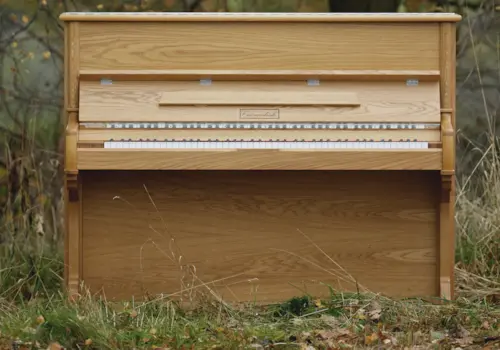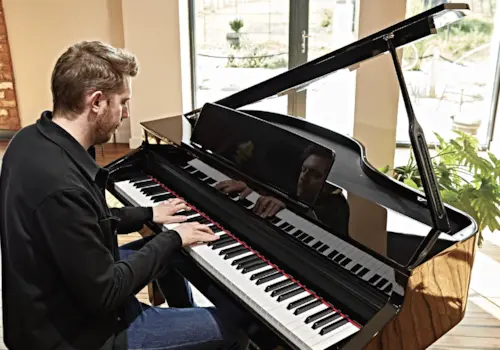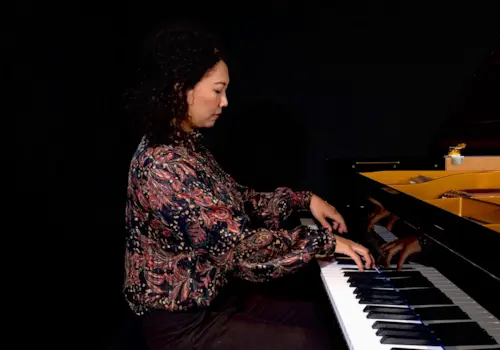02 September 2011
|
Concert pianist and teacher Lucy Parham gives an in-depth piano lesson on this well-known Debussy Estampe. Read part of her lesson...
It’s hard to know what actually inspired this piece. There are different theories, but Debussy’s recollection of watching the rain fall in a garden is unquestionable. ‘Jardins sous la pluie’ is the third piece in Estampes (‘Prints’) and that in itself is another clue. The meaning of the title is obvious (‘Gardens in the rain’) and it’s so important to convey that meaning when playing the piece. The rain in this particular garden is brilliantly interwoven with two famous French children’s nursery songs – one called Dodo, l’enfant do (similar to the ‘night-night’ you’d say to your child) and the other called Nous n’irons plus au bois (We’ll go down to the woods no more). It’s interesting to note that rain in childhood had been in Debussy’s mind for some time. One can think of his evocation of childhood and children in major works including the Children’s Corner Suite. In ‘Jardins sous la pluie’ Debussy depicts the rain with a sparkling clarity and Classical essence and illustrates it further with a crack of the thunder towards the end.
This piece is similar in technique a toccata (a fast, alternating hand, showpiece), so you need to possess good left/right-hand coordination to play it. Small hands will often find it easier to play than large hands as they can often get gummed up!
With the LH fingering in the first bar and onwards, you have a choice depending on your hand type: you can use one finger (such as 3–3–3–3 in that first bar, on the E–E–F sharp–G) or 4–3–3–2 (that’s what I’d do). But it’s totally down to taste and what feels best. Because the hands are so close together, the RH needs to be positioned at the ‘top’ of the keys, where the fall (the lid) is. Keep the LH, therefore, towards the edge of the keys, underneath the RH. Otherwise, they will just bang into each other. This is especially important if you have large hands. Top tip: keep the last note of the bar – the RH thumb – as light as possible. Imagine it’s staccato. By doing this, the RH thumb should remove itself in time for the LH to play the melody note on the first beat of the following bar.
I would take the very first four semiquaver notes of the piece, and play them round and round, in a type of circle, in the key of E minor, as is. Then go up the scale and do this in F minor, and experiment with other keys, just to get the knack. You need this knack throughout the piece, so master it from the start. You could also try learning the RH in a block chord to start with, just to get the structure. The melody at the start (the Dodo melody) is of course in the LH. The RH fingering is 5–2–1. Think four beats per bar to start with (aiming for two beats per bar when you have mastered the piece) and be careful that the second beat of bar 1, the E in the left hand, is not a melody note. We’re looking for crotchet-quaver-quaver as the melody notes in that bar. Debussy wanted this piece really fast – he puts ‘net et vif’ in the title and he’s written 2/2, not 4/4, so there’s no way around it, this piece ultimately needs to be pretty fast. But never at the expense of clarity in the fingertips. Think of playing it with Classical, Scarlatti-type equality (egalité). There should be almost no pedal in the first three bars (just a little bit on the first beats). Pedalling starts properly at bar 4 when the semibreves come in. You have to pedal very carefully in the piece – try to ‘listen’ to your foot at all times...
This is just a part of Lucy Parham's piano lesson, which featured in Pianist 61. To read it in full, or any other of the lessons, look at our back issues.







